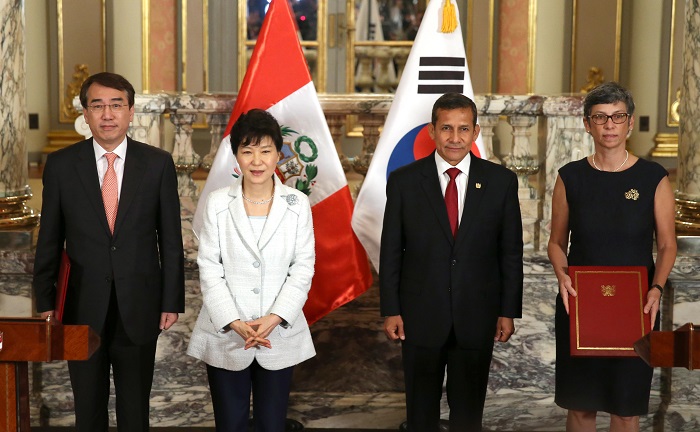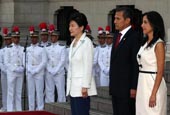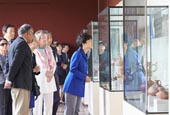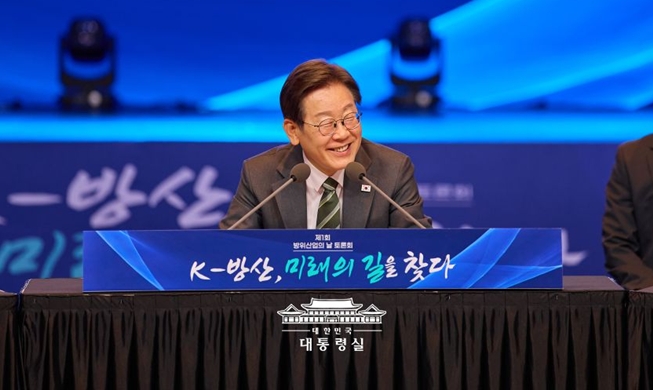A memorandum of understanding (MOU) was signed for the development of scientific research and development (R&D) complexes between Korea and Peru on April 20. The Ministry of Science, ICT and Future Planning and Peru's National Council of Science and Technology will share know-how on various Korea-Science Technology Park (K-STP) models.
The Daedeok Innopolis, the first such complex, was built in 2005 to be a, "knowledge-based innovative cluster." Following that, R&D complexes were established in Daegu, Busan and Gwangju, too. The MOU was signed to cover cooperation on the establishment, operation and management of new such complexes, the exchange of personnel in various fields, including biotechnology, new materials, environmental techniques and information and communications technology (ICT), and to encourage business networks and exchanges between businesses.

The two sides began plans for the MOU last June when Peruvian Vice Minister Fernando Rojas Samanez of the foreign ministry visited the Daedeok complex. Last September, Angel Neyra, a Peruvian congressperson, also visited the complex and requested advice on policies and plans for the establishment of an "ICT Corridor," a similar model, in Peru. In addition, Maria Fernandez, head of the Peruvian science and technology committee, visited the Ministry of Science, ICT and Future Planning on September 25 to ask for support on a feasibility study looking into the establishment of such a complex in Peru.
The Ministry of Science agreed on the need for cooperation on continued networks with the Peruvian science and technology committee, and supported the signing of the MOU.
The complexes in Korea have been carrying out a number of training programs, including short-term training courses and courses for senior-level policy makers regarding the K-STP models. There were 13 courses offered to 253 participants from 60 countries between 2008 and 2015. The 10th training course was offered in 2013, and the 12th and 13th in 2014 in Peru.
The K-STP models have increasingly been used as benchmarks by many nations that want to push economic and social development as Korea has done. As of today, the Ministry of Science has been offering consultations on scientific models to Ecuador, Kazakhstan and Kuwait. The Korean science ministry said that it will cooperate with Peru and share its science- and technology-oriented model, and solidify the foundation for economic and social development. Also, it plans to share Korea's experiences with science- and technology-centered economic development, and raise global awareness about Korea's innovative clusters which can possibly be linked to business opportunities with corporations and public research centers across Central and South America.
By Wi Tack-whan, Lee Seung-ah
Photo: Yonhap News
Korea.net Staff Writers
whan23@korea.kr
The Daedeok Innopolis, the first such complex, was built in 2005 to be a, "knowledge-based innovative cluster." Following that, R&D complexes were established in Daegu, Busan and Gwangju, too. The MOU was signed to cover cooperation on the establishment, operation and management of new such complexes, the exchange of personnel in various fields, including biotechnology, new materials, environmental techniques and information and communications technology (ICT), and to encourage business networks and exchanges between businesses.

An MOU signing ceremony is held at the presidential palace in Lima on April 20. It was attended by President Park Geun-hye (second from left), Peruvian President Ollanta Humala (third from left), Lee Sukjoon, vice minister of the Ministry of Science, ICT and Future Planning, and Maria Gisella Orjeda Fernandez, head of the Peruvian science and technology committee.
The two sides began plans for the MOU last June when Peruvian Vice Minister Fernando Rojas Samanez of the foreign ministry visited the Daedeok complex. Last September, Angel Neyra, a Peruvian congressperson, also visited the complex and requested advice on policies and plans for the establishment of an "ICT Corridor," a similar model, in Peru. In addition, Maria Fernandez, head of the Peruvian science and technology committee, visited the Ministry of Science, ICT and Future Planning on September 25 to ask for support on a feasibility study looking into the establishment of such a complex in Peru.
The Ministry of Science agreed on the need for cooperation on continued networks with the Peruvian science and technology committee, and supported the signing of the MOU.
The complexes in Korea have been carrying out a number of training programs, including short-term training courses and courses for senior-level policy makers regarding the K-STP models. There were 13 courses offered to 253 participants from 60 countries between 2008 and 2015. The 10th training course was offered in 2013, and the 12th and 13th in 2014 in Peru.
The K-STP models have increasingly been used as benchmarks by many nations that want to push economic and social development as Korea has done. As of today, the Ministry of Science has been offering consultations on scientific models to Ecuador, Kazakhstan and Kuwait. The Korean science ministry said that it will cooperate with Peru and share its science- and technology-oriented model, and solidify the foundation for economic and social development. Also, it plans to share Korea's experiences with science- and technology-centered economic development, and raise global awareness about Korea's innovative clusters which can possibly be linked to business opportunities with corporations and public research centers across Central and South America.
By Wi Tack-whan, Lee Seung-ah
Photo: Yonhap News
Korea.net Staff Writers
whan23@korea.kr
Most popular
- Grammy-winning producer calls Suga of BTS 'amazing artist'
- Animated 'KPop Demon Hunters' tops Netflix charts in 41 markets
- Reunited BLACKPINK releases video preview of world tour
- 'Universal love, family' themes fuel success of 'King of Kings': director
- New York Times picks 'Parasite' as top movie of 21st century



